Design of main structural parameters of denim fabric
1. Raw material selection
The scope of use of denim fabric raw materials is becoming increasingly broad. The selection of raw materials has broken through the pattern of mainly cotton, and a variety of raw material series have appeared, such as linen cotton, ramie, spun silk, polyester, spandex, differential chemical fibers, wild fibers, etc., among which there are blended chemical fiber fabrics or interlaced ones. wait.
For example, the weft yarn of elastic denim fabric is useful for spandex core-spun yarn, and useful for the intersection of spandex yarn and cotton yarn (such as two 29tex cotton yarn and one 7.8tex spandex yarn with a slight twist), which is useful PBT elastic yarn, etc. In particular, PBT elastic yarn has the advantages of sufficient elasticity, strong and durable, and low cost.
Use viscose yarn with a linear density of less than 18tex as raw material to make rayon-like denim fabric. In addition to the appearance of ordinary pure cotton thin denim fabric, it also has the style of rayon fabric.
It is a TRC denim fabric that uses viscose/cotton (R/C) blended chemical fiber fabric yarn as warp yarn and polyester (T) filament or polyester/cotton (T/C) blended chemical fiber fabric yarn as weft yarn.
There are denim woven from 48tex*48tex silk rotor yarn, 45tex linen/cotton (55/45) blended chemical fiber fabric yarn as warp yarn, 125tex rabbit hair yarn (40%) and 107tex polyester air textured yarn ( 60%) are interlaced as weft yarns to weave into jacquard denim fabric, which has a rich hand feel and strong wool texture.
There are linen-cotton-polyester denim fabrics that use linen/cotton (55/45) blended chemical fiber fabrics as warp yarns and linen/polyester (55/45) blended chemical fiber fabrics as weft yarns. This blended chemical fiber fabric product has more advantages than ordinary denim fabrics. It is characterized by ruggedness, comfort, strength and wear resistance. There is also a linen/cotton three-in-one crepe denim fabric using linen/cotton (55/45) as the warp, arranged in alternating vertical strips and interlaced with unfinished viscose fiber.
Using colored natural cotton as raw material, for example, Japan has developed a colored high-end denim fabric made of natural brown cotton fiber as raw material, called “flesh-colored denim fabric”. The product has a natural tone, soft finish and natural feel , adding a new finishing touch to jeans.
Denim fabrics are made of ring-spun yarns of uneven thickness as warp yarns and rotor yarns as weft yarns. They have a retro-antique tendency of “advocating classics and returning to nature” and are called “ancient denim fabrics”. Or all warp and weft yarns are made of rotor yarns with pattern effects, and slub yarns are mixed into the normal warp yarns in a certain proportion to make slub denim fabrics. The fabric style retains the unique roughness, free and easy style of the original denim fabrics. texture, and also has a “raindrop-like” effect, which is very popular in Europe.
Others use wild fibers (Apocynum, etc.) as raw materials.
2. Raw yarn requirements
(1) Raw yarn structure
Raw yarn spun by rotor spinning has won the favor of the denim fabric production industry for its superior performance, gradually replacing ring yarn, and Great progress has been made.
1. Structural characteristics of rotor yarn
(1) The fibers are divided into two parts: the yarn core and the outer layer. The yarn core is arranged more closely and the outer layer of fibers is relatively loose.
(2) The fiber shape in the yarn is complex and the spinning yarn structure is uneven.
2. Performance of rotor yarn
(1) Good uniformity, manifested by low unevenness, few details, thick spots and neps.
(2) The strength is low, but the coefficient of variation is small and the elongation is large.
(3) Good wear resistance.
(4) Good looseness and full structure.
(5) Strong ability to resist fatigue.
(6) There is less hairiness, but the uneven hairiness is serious.
(7) The coloring has good hygroscopicity (especially the ring dyeing effect is good).
(2) Raw yarn requirements
1. Rotor yarn quality requirements
(1) Uniform evenness (including long segments and short segments).
(2) There should be less clutter.
(3) It has certain strength and elasticity.
(4) No yarn defects.
(5) Fewer knots.
Denim fabrics have higher requirements for yarn evenness, especially high-end denim fabrics. Uneven evenness and slub yarn defects in the original yarn not only affect the strength unevenness of the warp and weft yarns, but also affect the fabric style and appearance quality of the denim fabric. In particular, sliver and slub defects on the weft yarn pose a greater threat to the appearance quality of the finished product. As for the evenness and slubs on the warp yarns, generally mild unevenness has little impact on the appearance quality of the product. Therefore, the evenness level of the warp yarns can be lower than the requirements of the weft yarns.
The knots and hairiness on the warp yarns have a great influence on the coloring; excessive knots and hairiness on the weft yarns will also affect the appearance quality of the cloth, especially neps and hairiness, which will cause white stars on the cloth. , causing a large number of downgrades.
The production of denim warp yarns is characterized by a long process. If the spinning yarn does not have sufficient strength and elasticity, it will cause a large amount of unexpected elongation or even breakage, seriously affecting the smooth progress of each production process. Others, in the weaving process, generally use largerMachine tension, which also requires warp yarns to have high strength and excellent elasticity.
Denim fabrics are mostly made of thick special yarns, and the knots of the original yarn often protrude from the fabric surface, causing obvious knot defects. Although weft yarn knots are not as obvious and easily exposed as warp yarn knots and affect the appearance quality of the finished product, too many knots will cause scattered defects on the cloth surface. The specific requirements for rotor yarn are shown in Table 3-1.
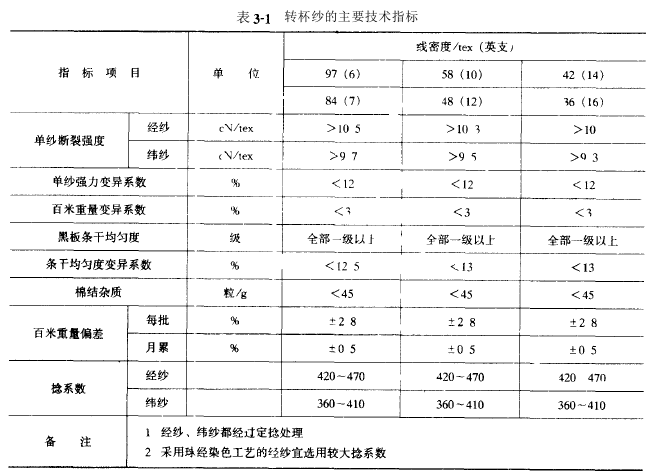
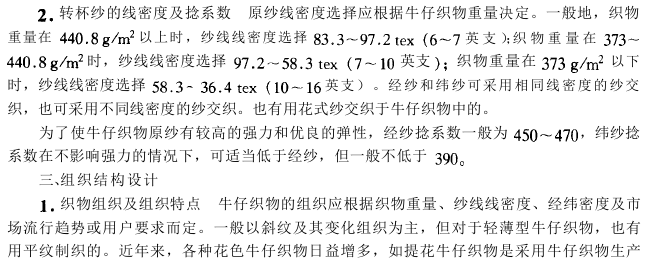
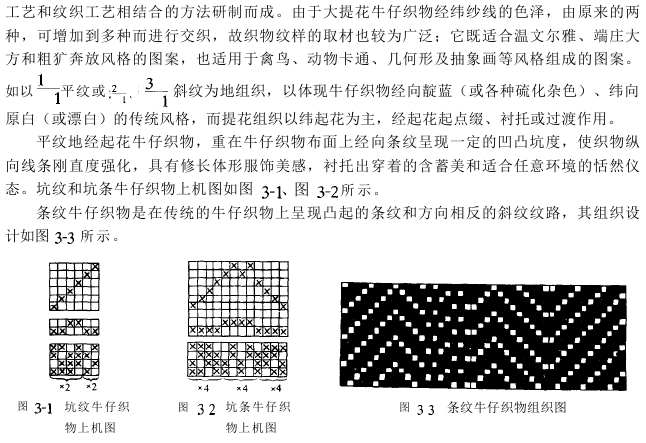
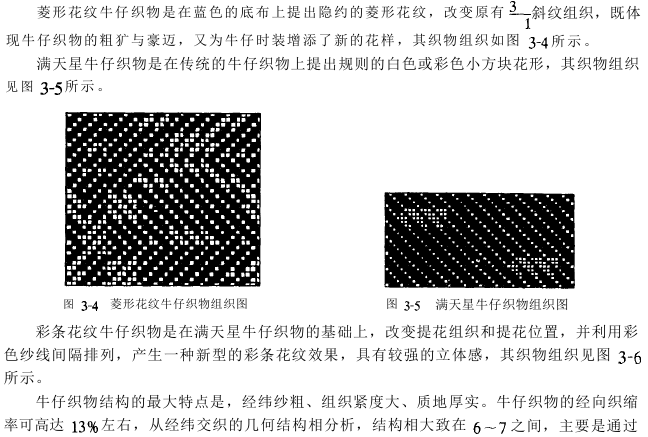
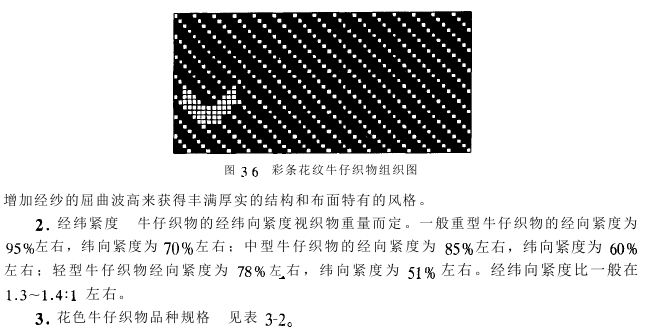
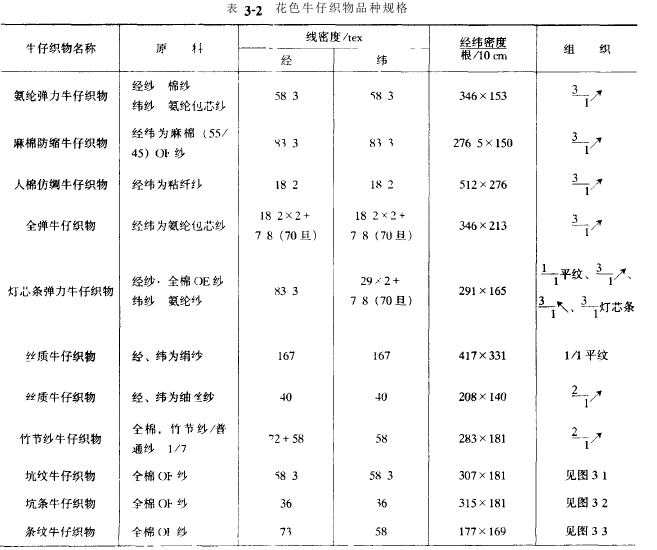
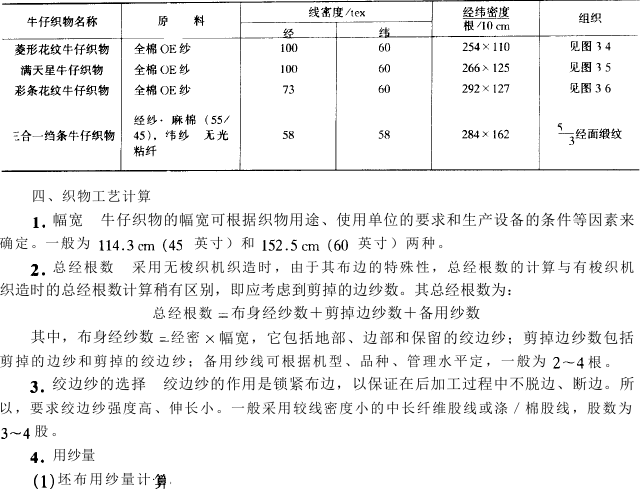
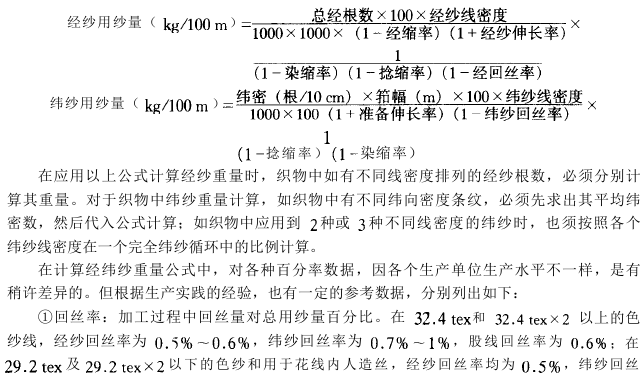
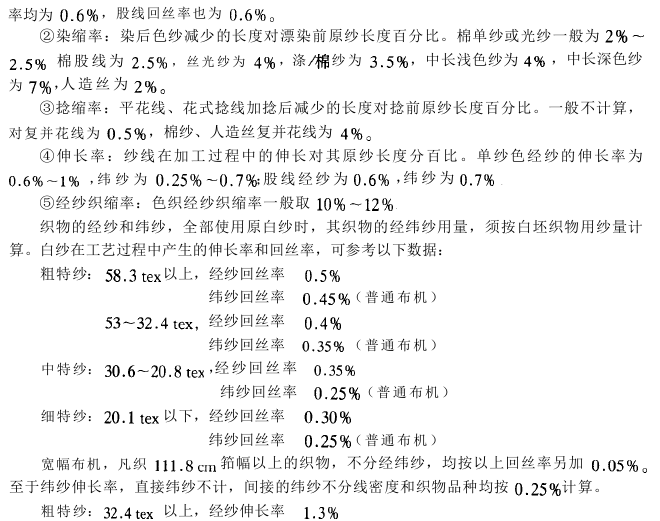
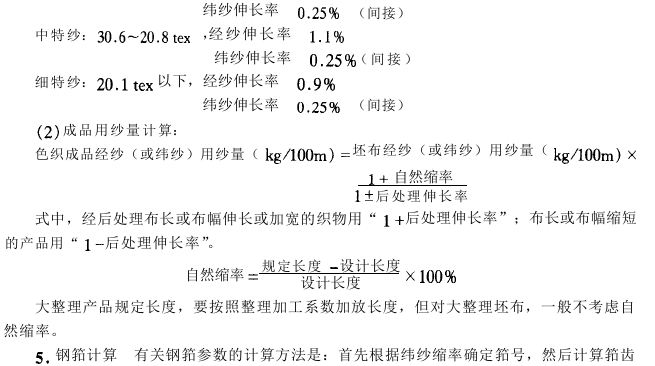

AAAERT5Y4375JTY




